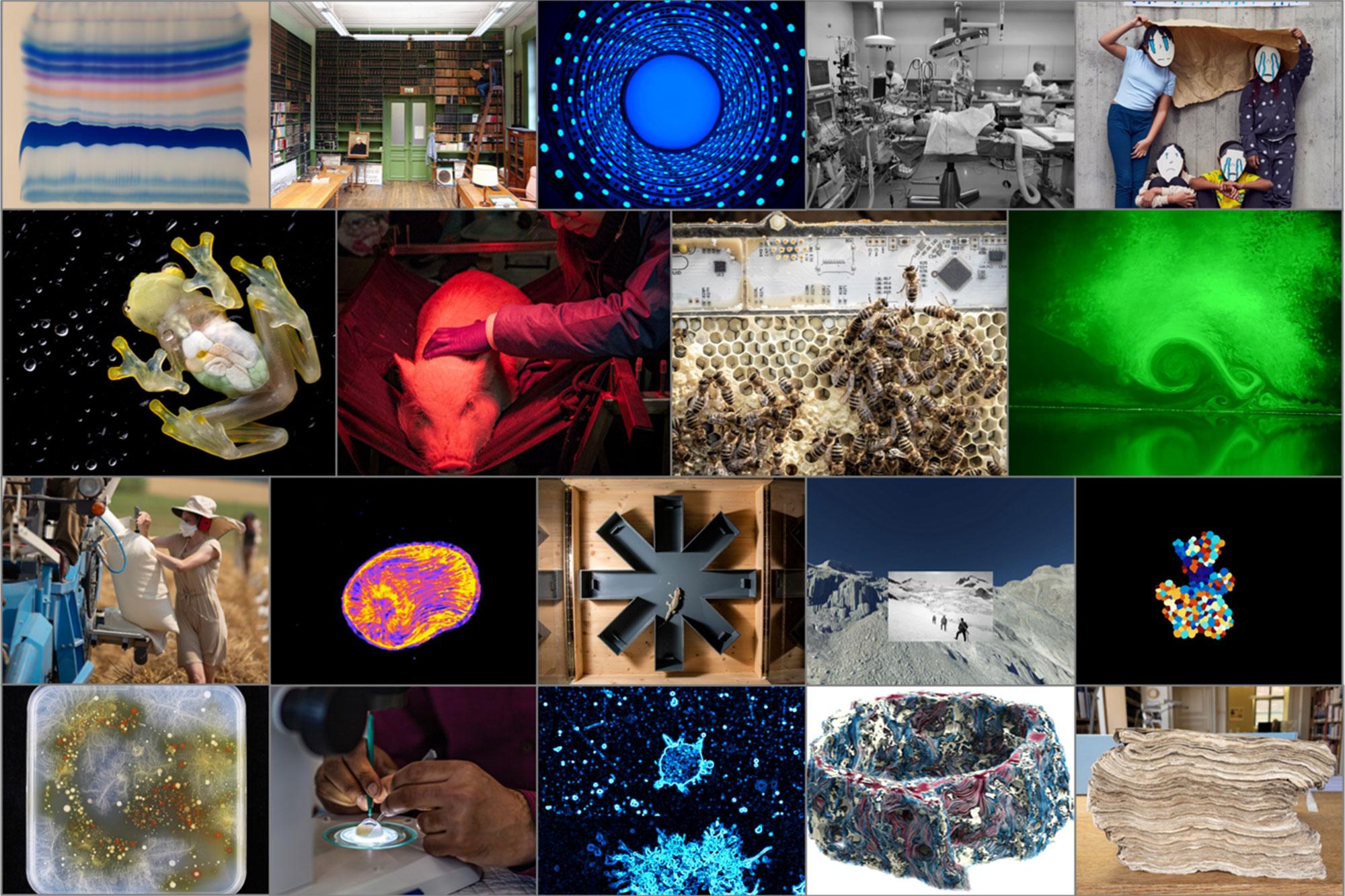Photographs reveal the hidden beauty of research

Nineteen works particularly impressed the international jury of the 2023 SNSF Scientific Image Competition. They reveal hidden beauty in research, tell tales of happy coincidences and explore new perspectives on the world around us.
The transparent belly of a frog, the caring gesture of a veterinarian, a colony of bees residing on an electronic circuit, and mesmerising vortices: the selection by the jury of the 2023 SNSF Scientific Image Competition is a foray into the diversity of everyday research. The jury awarded four first prizes and a record fifteen distinctions. Since 2017, the Swiss National Science Foundation (SNSF) competition has been inviting scientists working in Switzerland to present their everyday research from an unusual perspective. This year, 435 entries were submitted.
Four first prizes
The snapshot of the transparent belly of a glass frog was awarded first place in the "Object of study" category. The image, by Francesca Angiolani-Larrea, a PhD student at the University of Bern, impressed the jury with its "simple but effective composition" that offers "a fascinating perspective".
Rafael Barmak, a PhD student at EPFL, is the winner of the "Locations and instruments" category with a shot of an electronic device used to study bees. The jury was impressed with the "high-quality image" that "leads us into a new biohybrid world where nature meets technology".
First place in the "Women and men of science" category was awarded to Mariafrancesca Petrucci, a PhD student in veterinary medicine at the University of Bern, for her self-portrait at the side of a miniature pig. The "caring gesture by the veterinarian is a soft contrast to the often controversial topic of animal testing" in an image which, according to the jury, "brilliantly expresses emotions that are rarely associated with science". "I like this image because it shows that medicine and research are not just all about white coats and sterile environments," explains Mariafrancesca Petrucci. "As far as possible, animal testing should be carried out where the animals live, such as here on a farm, as transportation is stressful for them."
The winner of the "Video loops" category is a visualisation of the vortices created by an aircraft wing. The film by Cyprien de Sepibus, a PhD student at the Geneva School of Landscape, Engineering and Architecture (HES-SO) and EPFL, "magically makes the invisible visible" and transports us "from the physical world into a hazy, seemingly virtual flow," the jury writes.
Further awards
The jury also awarded fifteen distinctions, more than ever before. Awards were given to a wide variety of works, such as a scene about exclusion portrayed by children, an abstract work of art that resulted from a chemical analysis, a spectacular visualisation of cerebrospinal fluid around the optic nerve, and the symbolic weight of the past in archive work.
All of the 2800 or so images submitted to date for the competition are available for free in an online gallery. The images and videos that won awards in 2023 are being exhibited at the Biel/Bienne Festival of Photography from 5–28 May 2023, including a guided tour on 27 May 2023.
"The competition presents a realistic, extensive and diverse vision of what research is today," comments Matthias Egger, President of the National Research Council of the Swiss National Science Foundation. “Of the award-winning works, half were submitted by PhD students, half were taken by women, and half were from researchers who came to Switzerland from abroad. These figures reflect the dynamism and diversity of young scientists."
The 2023 jury
Mónica Bello, Director of Arts at Cern (Switzerland), is the President of the jury. Other members include biologist and artist Tanja Gesell from the University of Vienna (Austria), Emmanuelle Giacometti, director of Espace des Inventions (Switzerland), Lars Lindemann, photographer for Geo magazine (Germany), and photographer Alexander Sauer (Switzerland).